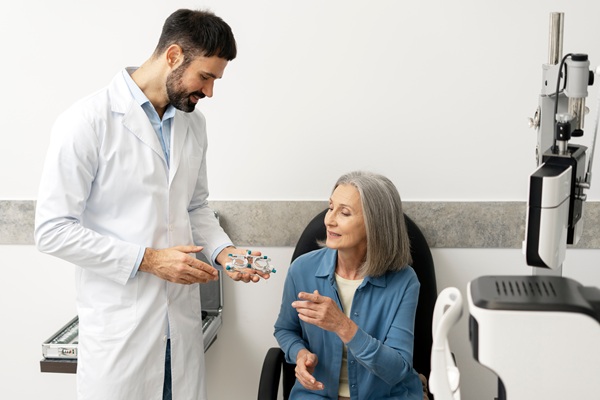Glaucoma Checks at Optometry Appointment

You have an optometry appointment on the horizon and you are curious about glaucoma checks. You know these checks are important to protect your eyes, but you are not sure what they entail. Learn more about the glaucoma checks you will undergo at your optometrist’s office. Then you will be prepared for your appointment.
Types of glaucoma checks during an optometry appointment
In the early stages, most people with glaucoma do not have any symptoms. However, as the disease progresses, symptoms such as severe eye pain, visual disturbance and blurred vision can occur. Untreated glaucoma can also lead to blindness. Because symptoms are not noticeable in the early stages, getting tested is critical.
An optometrist must run various tests to determine if a patient has glaucoma. Most use five different tests. The results of the tests are analyzed to provide a diagnosis. Learn more about each of the five tests.
Perimetry
The eye doctor will conduct a perimetry test. This visual field test allows the optometrist to check the patient’s field of vision. The patient will look ahead and look for light that passes along the peripheral vision. The patient lets the eye know when the light appears. After the test, the optometrist maps the patient’s field of vision.
Tonometry
An optometrist measures the pressure in the eye with a tonometry test. The optometrist begins by putting numbing drops in the eyes. Then, the eye doctor presses an instrument to the outside of the eye. The instrument reads the amount of pressure in the eye.
Pachymetry
The eye doctor must measure the thickness of the cornea when testing for glaucoma. This is done with a pachymetry exam. The optometrist uses a small probe to check the thickness. It is placed on the cornea. The thickness of the cornea plays a role in eye pressure readings. This information will help the eye doctor determine if the patient has glaucoma.
Ophthalmoscopy
The eye doctor will also conduct an ophthalmoscopy to look at the optic nerve. The eye doctor dilates the pupil to provide a better look at the optic nerve. The eye is examined with a small device that has lights and magnifies the optic nerve. This device checks the intraocular pressure.
Gonioscopy
The optometrist places numbing drops in the eye. Once the eyes are numb, the eye doctor inserts contact lenses. The mirrored lenses allow the optometrist to examine the angle of the cornea and iris. If the angle is too big or too small, the patient might have glaucoma.
Get tested for glaucoma at an optometry appointment
Do not wait to get tested until you have signs of glaucoma. Instead, visit the optometrist and get tested so if you do have it, it can be caught and treated early. Your eye doctor will run a perimetry, tonometry, pachymetry, ophthalmoscopy and gonioscopy test. Each test will provide important information to help the eye doctor diagnose or rule out glaucoma.
Request an appointment here: https://www.texasoptical.net or call Texas Optical at (214) 771-7333 for an appointment in our Dallas office.
Check out what others are saying about our services on Yelp: Read our Yelp reviews.
Recent Posts
Red, itchy eyes can affect your everyday comfort and reduce overall well-being. It is important to seek effective vision care from the first sign of irritation. Proper attention to symptoms, underlying causes, and healthy habits ensures stronger long-term eye health and greater day-to-day clarity. Redness and itchiness often stem from several common triggers. These include: Allergic…
New spots or shadows drifting across vision can be unsettling, and sudden changes sometimes require emergency eye care to protect long-term sight. Many floaters are harmless, but others signal serious problems with the retina or internal eye structures. Understanding when floaters are normal and when they point to a true eye emergency helps patients act…
Glaucoma treatment plays a vital role in preserving vision and protecting the optic nerve from further damage. Many patients rely on daily eye drops to manage intraocular pressure, but these medications can sometimes come with side effects. Understanding how to recognize, minimize, and communicate about these effects supports long-term success and comfort with treatment. While…
Progressive lenses offer clear vision at near, arm's length, and far distances without the visible lines found in bifocals. They provide a smooth change in power from top to bottom, which means the eyes can focus comfortably throughout the day. With the right fit and guidance from an optometrist, progressive lenses help reduce eye strain…


